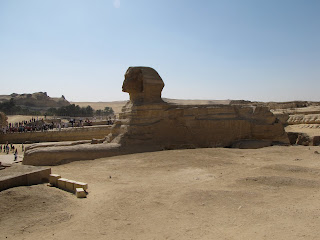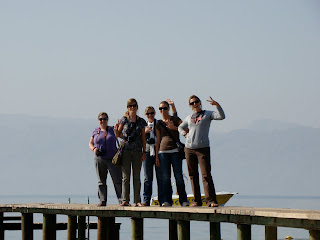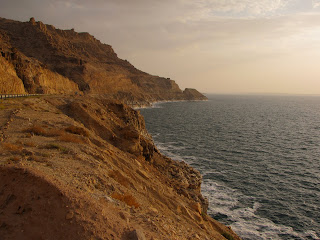Petra, meaning
rock, lies at the slope of Mt. Hor south of Amman on the outskirts of Wadi Musa,
Valley of Moses. Established in the 6th century BC as the capital city of the Nabataeans, it is currently the most visited site in Jordan and became one of the New Seven Wonders of the World in 2007, in addition to its claim as a World Heritage site in 1985.
If that doesn't jog your memory, think of Indiana Jones and the Last Crusade. Remember how Harrison Ford found the Holy Grail inside that huge building carved out of a rock? Yep, that's the Treasury, part of the ancient city of Petra. Aside from Indiana Jones, Moses also visited the area with the Israelites and it is there where he struck a rock with his staff to extract water. His brother, Aaron, is also buried atop Mount Hor.
Entering Petra from the Eastern side is the most popular and rewarding option. A half-mile hike, or donkey ride, leads you to the entrance of the Siq—probably the most theatrical gorge in the world. Formed after tectonic forces split the rock in half, the sandstone Siq gained its character from the waters and wind of Wadi Musa, which blew through the gap and rounded the rocky corners. As you gain ground on the one mile walk through the Siq, the rock walls push in and out, contracting like a lung. Vibrant hues of red and brown intensify with each ray of sunlight as the path opens up and deepen in the shadows when corners close in. Bracing at each turn, you know something special is near. Just when your intrigue peaks, you catch a glimpse of something bright as if someone has turned on a spotlight. The shadows are banned from going any farther and you know it's here.... the Treasury.

The half-mile before the Siq

Entering the mile long Siq




A glimpse of something spectacular



The Treasury
Forty meters high and carved entirely from the rock face, the Treasury rewards each visitor after their hike through the Siq—just as the Nabataeans intended. Although its purpose is unknown, most archaeologists believe it was used as a temple or tomb. Due to its misnomer, however, many Bedouins believed the urn at the top to be full of treasure; and in an effort to release the valuables, they pumped it full of bullets. Unfortunately, no treasure was found and the bullet holes, clearly visible from the ground, add an unnecessary modern-day touch.
Although astonishing, the Treasury is far from the end of Petra. Beyond the impressive carving, the cliffs open up to allow expansive views of the surrounding mountainsides. Cave dwellings are clearly visible at different levels and the image of life among the rocks is better understood.
Once living within Petra, the Bedouin tribes today reside in government assisted homes just outside the enchanting ruins in a semi-controversial effort to preserve it. However, they still spend most of their time within Petra in order to make a living guiding tours, giving camel or donkey rides, and selling souvenirs. Referring to their animals as air-conditioned taxis, it's easy to see most of them love spending time with tourists and simply working among one of the most spectacular sites in the world.


Cave homes



Beautiful stone


Air-conditioned taxis
Over an hour hike from the Treasury stands the almost equally impressive Monastery. Larger in size but lacking in the ornamentation of the Treasury, the Monastery was most likely used by the Nabataeans as a temple. Climbing the steep path to the left of the Monastery is unadvisable, but local kids enjoy playing on the steep carving, even hopping from one peak to the next—probably not a good idea.
Petra's immense size offers new discoveries the more one visits, but the heat and dry air quickly deflated our urge to continue on much longer. Before turning back, there was just one more thing we had to see—the view of the end of the world, according to the sign.

Hiking toward the Monastery



The Monastery


Overlooking the end of the world with a conspicuous nod to Keen.
After several hours of exploration, hiking, photographing, and sweating; we decided to call it a day and head back. But, in the interest of time, entertainment, and just because we could; we hitched a ride on one of the Bedouin's air-conditioned taxis...











.svg.png)
















































